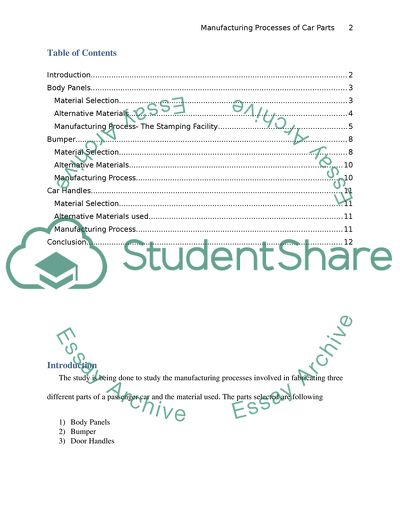Cite this document
(Manufacturing Processes and Materials used in Automobile Manufacturing Research Paper, n.d.)
Manufacturing Processes and Materials used in Automobile Manufacturing Research Paper. Retrieved from https://studentshare.org/engineering-and-construction/1805148-choose-a-simple-manufacture-product-that-consists-of-at-least-three-parts-if-more-parts-exist-in-the-product-then-choose-three-of-the-parts
Manufacturing Processes and Materials used in Automobile Manufacturing Research Paper. Retrieved from https://studentshare.org/engineering-and-construction/1805148-choose-a-simple-manufacture-product-that-consists-of-at-least-three-parts-if-more-parts-exist-in-the-product-then-choose-three-of-the-parts
(Manufacturing Processes and Materials Used in Automobile Manufacturing Research Paper)
Manufacturing Processes and Materials Used in Automobile Manufacturing Research Paper. https://studentshare.org/engineering-and-construction/1805148-choose-a-simple-manufacture-product-that-consists-of-at-least-three-parts-if-more-parts-exist-in-the-product-then-choose-three-of-the-parts.
Manufacturing Processes and Materials Used in Automobile Manufacturing Research Paper. https://studentshare.org/engineering-and-construction/1805148-choose-a-simple-manufacture-product-that-consists-of-at-least-three-parts-if-more-parts-exist-in-the-product-then-choose-three-of-the-parts.
“Manufacturing Processes and Materials Used in Automobile Manufacturing Research Paper”, n.d. https://studentshare.org/engineering-and-construction/1805148-choose-a-simple-manufacture-product-that-consists-of-at-least-three-parts-if-more-parts-exist-in-the-product-then-choose-three-of-the-parts.


